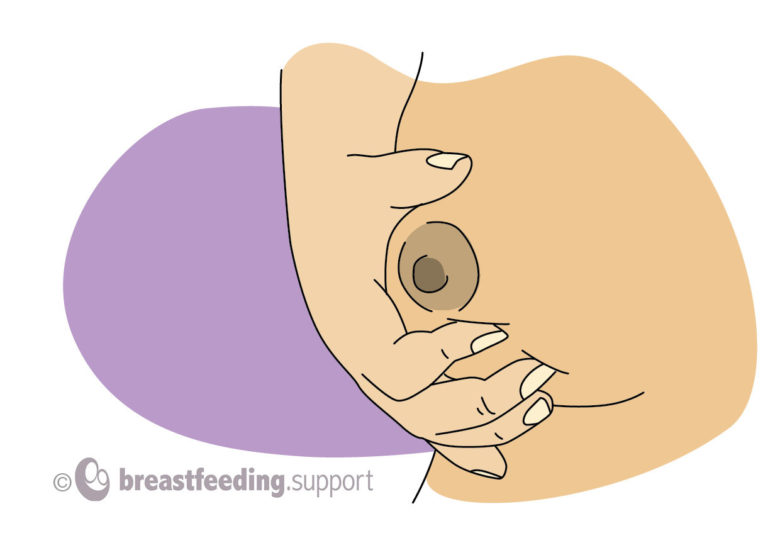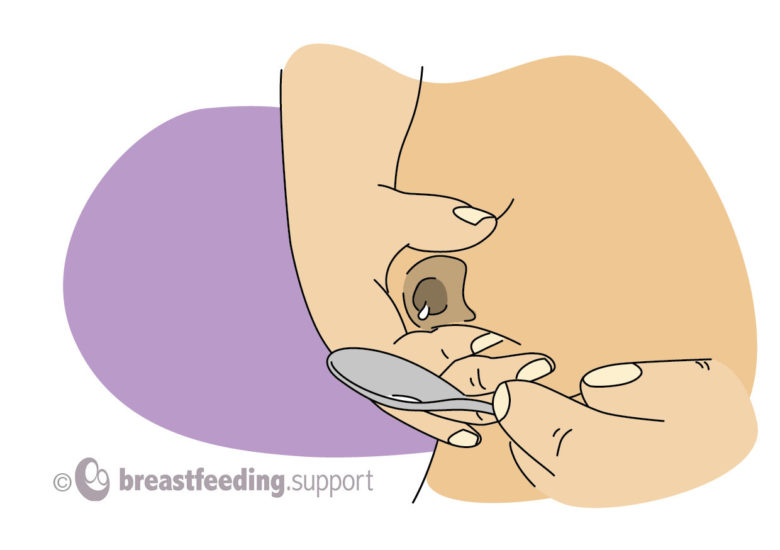Hand expressing breast milk is a very useful skill, it’s easy to learn and it’s free! This article shares tips and videos to help you get your milk flowing and the circumstances when it is particularly useful.

How milk is released
Breast milk isn’t released from the breast until it is needed. When a baby begins to breastfeed they stimulate a nerve in the nipple and areola (the darker skin around the nipple) that sends a message to the brain to release milk from the breast. This is called the milk ejection reflex or let-down. During the let-down, milk may be seen dripping from the nipple or you may see fine sprays like a shower head or watering can rose (see step 3 in the graphic below). If baby is breastfeeding, you will notice they start swallowing rapidly as more milk becomes available. By compressing the breast rhythmically with their jaw a baby can keep the milk flowing.
A mother, or helper, can mimic the baby’s technique via hand expression by using their fingers to (1) stimulate the let-down and (2) compress the milk ducts behind the nipple to remove milk from the breast.
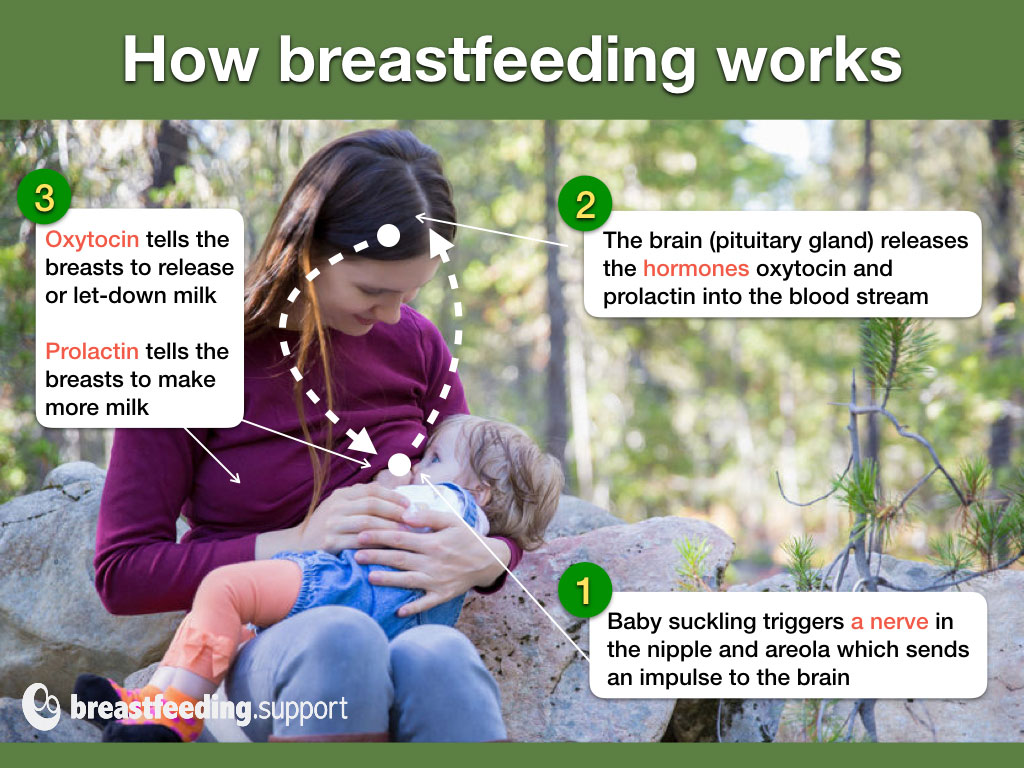
Prepare the breasts
Before hand expressing breast milk, it is important to wash hands and ensure any collection containers you are using are clean. To help milk flow it can be helpful to “prepare” the breasts to trigger the milk ejection reflex. Ideas for this include:
- Warmth across the breasts before expressing can help milk start to flow. You could try practicing in a warm bath or shower.
- Holding your baby skin-to-skin or lightly dressed helps to raise oxytocin levels which can help trigger the let-down. Looking at your baby or a photo of your baby can also be helpful.
- Massaging the breasts by very gentle stroking, rolling, kneading and tapping movements with warm hands can help to get the breast ready for hand expressing breast milk. Some mothers use a soft baby brush to massage the breast.
Hand expressing breast milk step by step
Once the let-down has been triggered, compressing the milk ducts in the breast will express milk. The fingers and thumb of one (or both) hands are placed around the breast behind the nipple and drawn together just as you might squeeze a tooth paste tube behind the nozzle—you don’t squeeze the hard nozzle tip (nipple) to get toothpaste out of the tube. Exactly where to place your fingers for the best effect is individual to each mother and trial and error. The following drawings explain the steps involved in hand expression:
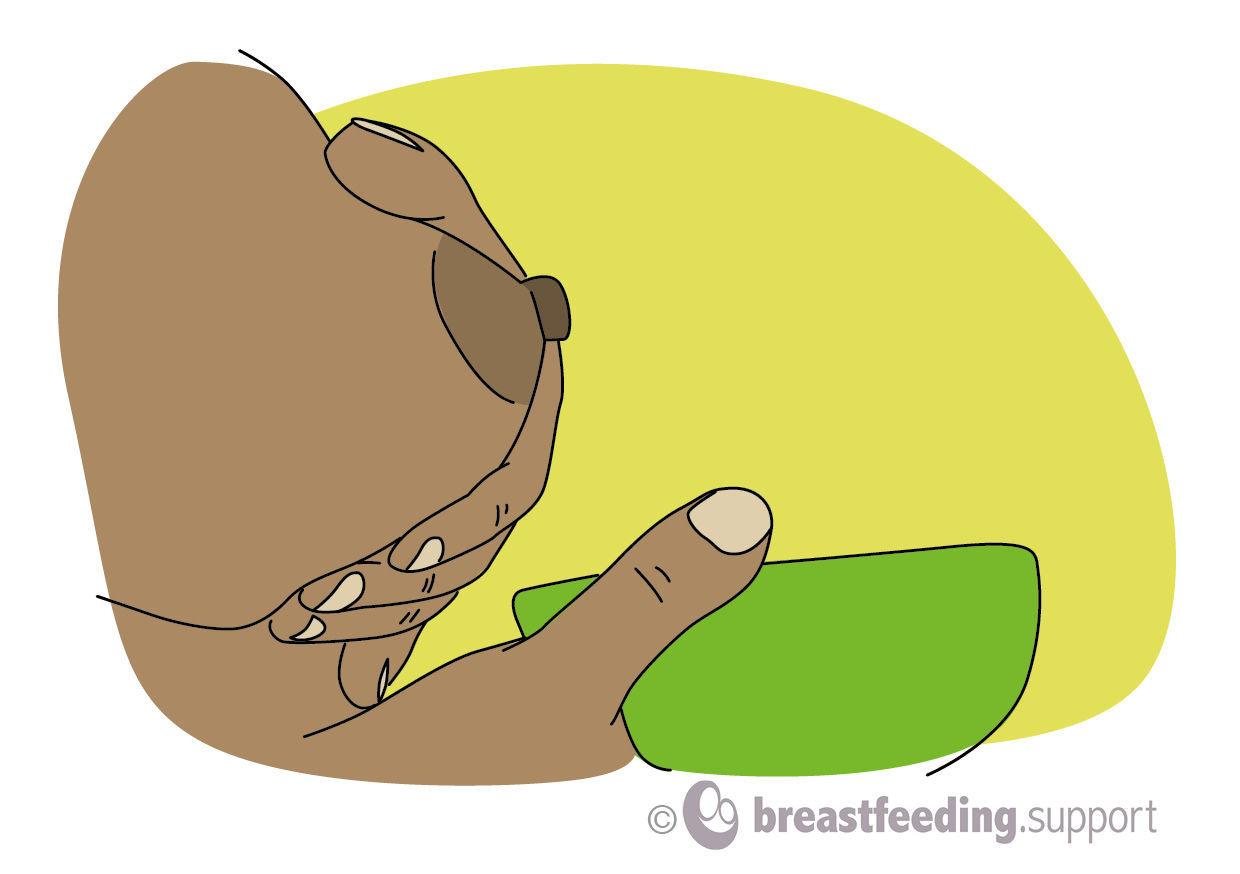
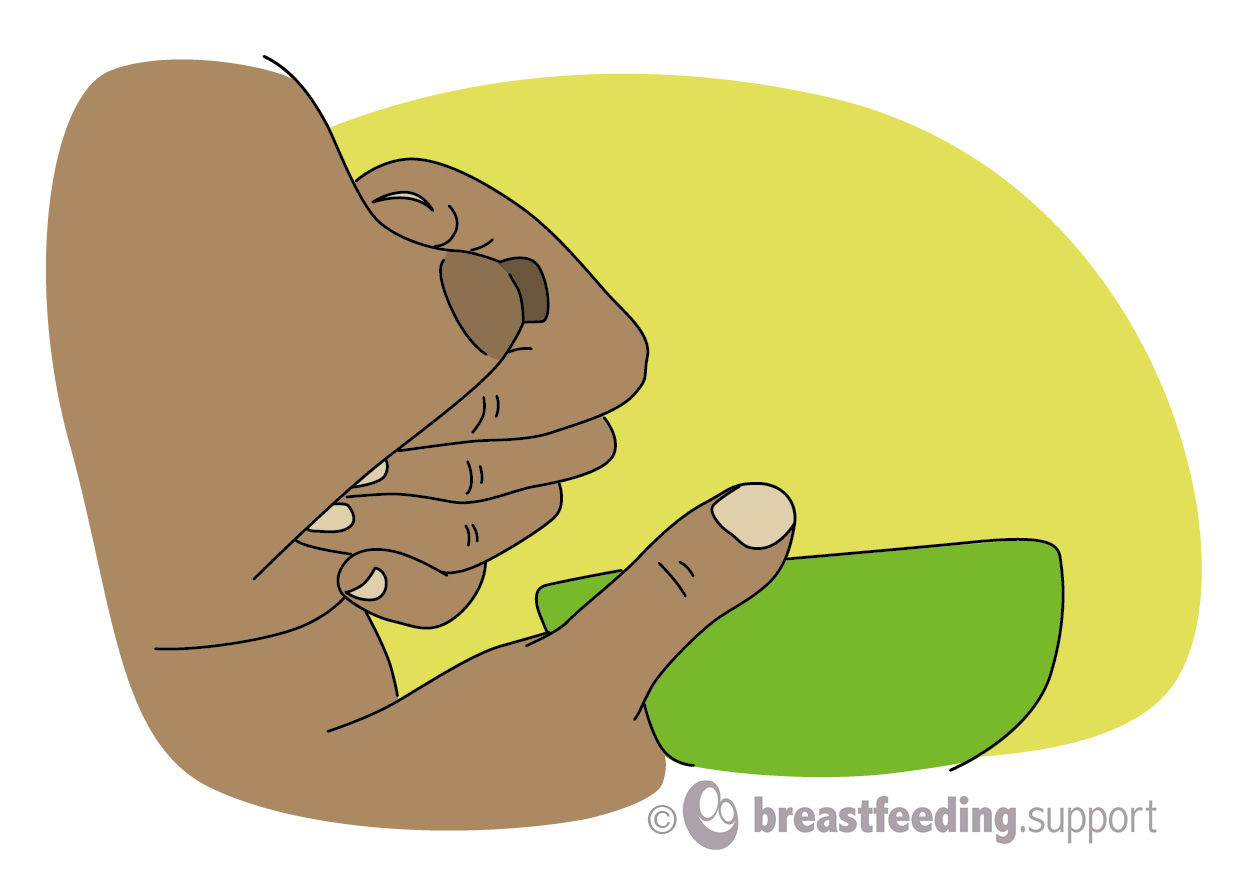
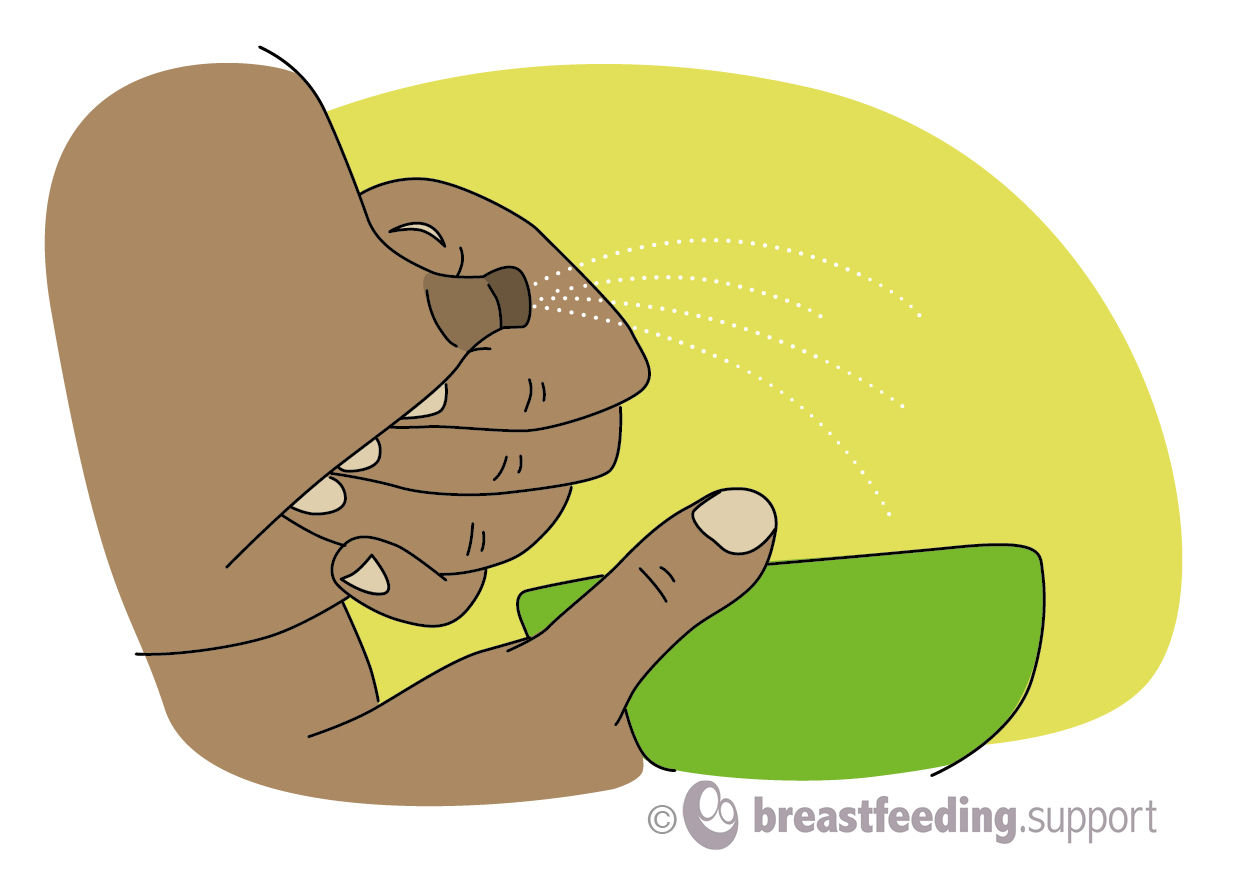
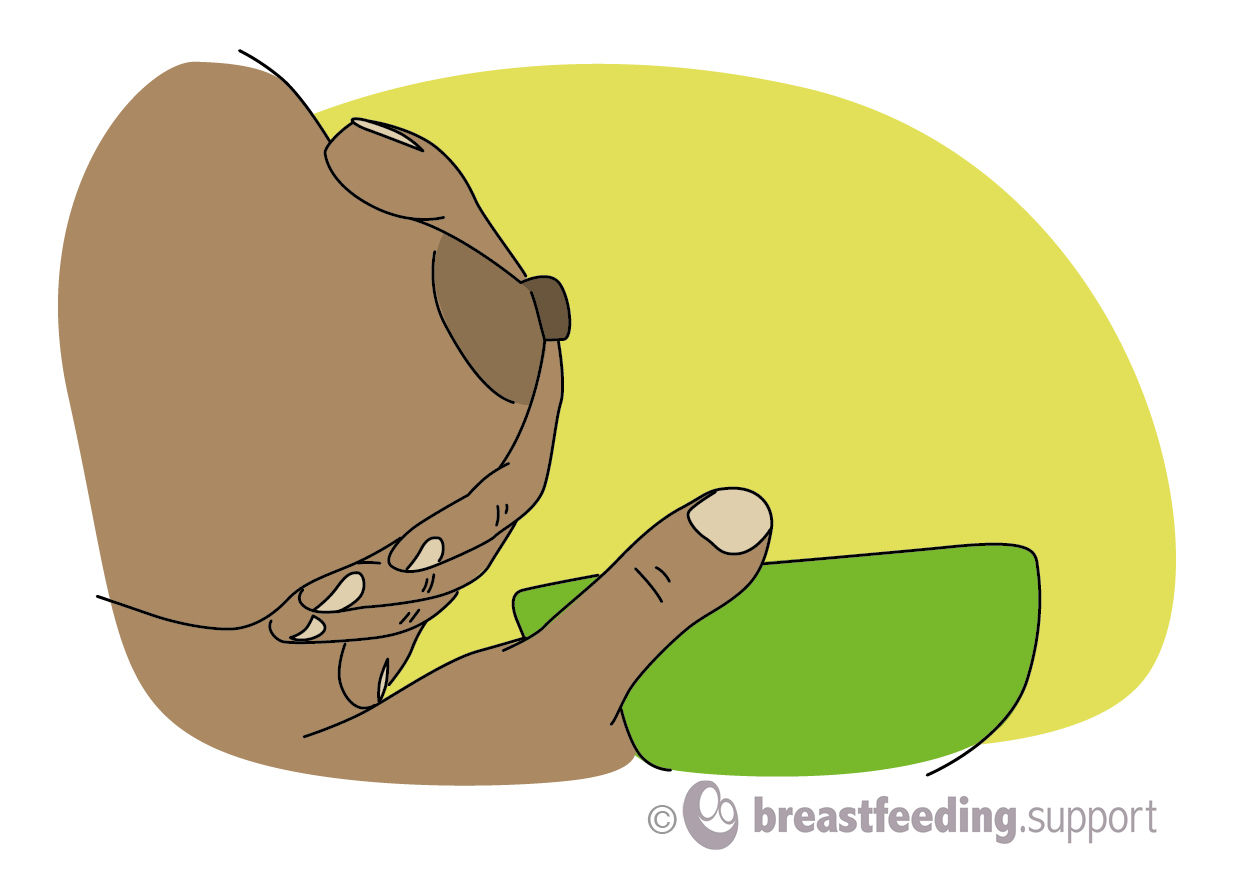
If you find it difficult to trigger a let-down, try practicing hand expressing after your baby has breastfed and while your milk is still flowing. Once you have experienced what works well for you, it will be easier to trigger the let-down and hand expressing your breast milk will become second nature to you.
Videos of hand expressing
A good way to learn how to hand express is to watch it being done. There are several variations to try and experimenting will help to find what works best for you. The following five video clips show slightly different tips and techniques:
1. How to Express Your First Milk—Small Baby Series. Global Health Media
This seven minute clip discusses hand expressing into a spoon or into a little cup after your baby is born. The video shows suggested finger positions to use, what is happening inside the breast when you express, and offers plenty of tips to get your milk flowing. The narrator reminds mothers not to let fingers slide across the breast as this can cause soreness:
2. The Basics of Breast Massage and Hand Expression by Maya Bolman and Ann Witt from Breastfeeding Medicine of North East Ohio.
This clip (4.5 minutes) shows a range of massage techniques to prepare the breasts (from 1:03). The narrator shares their hand expressing technique from 1:45—notice how the fingers are placed just behind the nipple and the helper uses first one hand, and then uses a finger from the other hand as well to get an even stronger flow of milk.
3. How to Use Your Hands When you Pump by Jane Morton from Stanford University
In this video from Stanford University, Jane Morton describes her preferred hand expressing technique at 7:14. As in the images above, the mother places her fingers and thumb around the breast some way behind the nipple and simultaneously pushes towards the chest wall while bringing her fingers together to compress the breast tissue. Morton reminds mothers to alternate expressing between the breasts, to take a rhythmical approach and to use hands to massage the breast.
4. Hand Expression by Unicef UK’s Baby Friendly Initiative
Unicef UK’s Baby Friendly Initiative video (two minutes 36 seconds long) demonstrates hand expressing breast milk on a knitted breast.
When is hand expressing breast milk useful?
Hand expressing is not always needed if breastfeeding is going well, but can be useful for any of the following situations:
#1 Baby won’t latch
If a baby won’t or can’t latch straight away after birth, or mother and baby have to be separated for medical reasons, hand expressing is a great way to provide milk to keep your baby fed. The first milk in the breast before breast milk volume increases on the second or third day is known as colostrum. Early volumes of colostrum are typically too small, thick and sticky to collect with a pump, so hand expressing into a spoon or collecting the drops with a syringe is a great way to harvest the first milk. The first video above How to Express Your First Milk by Global Health Media talks through expressing colostrum.
Hand expressing in the first hour after birth
Early hand expressing in the first hour after birth—and regularly thereafter—can help future milk volumes as well as stimulating the milk supply to come in as soon as possible.12
Feeding your baby expressed milk
Colostrum and later, mature breast milk can be fed to your baby by spoon, syringe, cup, feeding tube or bottle to keep baby well fed until they can latch.
#2 Severe engorgement
If there is severe engorgement (full and uncomfortable breasts) in the early days after birth, hand expressing can gently remove excess milk. Using a pump at this time may pull more fluid into the area and add to the engorgement so hand expressing can be particularly helpful. Hand expression can also be used at any stage of breastfeeding to relieve engorgement or a blocked duct. If a mother is struggling to get her milk to let-down see Engorgement Relief When Milk Won’t Flow.
#3 Low milk supply
If a mother has a low breast milk supply, combining hand expressing and pumping are great ways to drain the breasts to stimulate them to make more milk. Hand expressing after pumping and hands on pumping (using hands to gently massage the breast during a pumping session) can provide as much as 48% more milk.3 Hands on pumping is described by Jane Morton MD from Stanford School of Medicine in this Hands on Pumping video (see 5:15).
#4 Diabetes/antenatal expression
In certain situations, for example if a mother has diabetes, some hospitals advocate learning to hand express and collect prenatal colostrum in the weeks just before the baby is born. This provides a supplement to keep baby fed if there should be a drop in his blood sugar or any other complications requiring supplementation. For a review of the safety issues and when it is appropriate to express colostrum during pregnancy see Expressing Colostrum Antenatally.

#5 Storing breast milk
Pumps are not always a necessary purchase, some mothers are very skilled with hand expressing and can use this technique to store milk for when they are at work or separated from their baby. Before hand expressing breast milk for storage, wash your hands and check that any equipment used to collect milk is clean. See How Long Does Breast Milk Last for more information on breast milk storage.
Summary
Hand expressing breast milk is a good skill to master to support breastfeeding. Hand expressing can help to build a milk supply, provide supplements for your baby, breast milk to store, and relieve uncomfortable engorgement.
